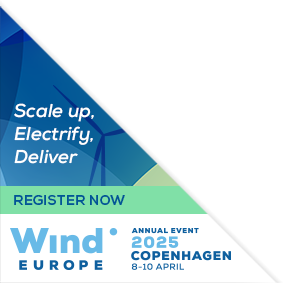Posters
Siblings:
ProceedingsProgrammeSpeakersPostersContent PartnersPowering the FutureMarkets TheatreResearch & Innovation in actionStudent programmePresenters dashboardCome meet the poster presenters to ask them questions and discuss their work
We would like to invite you to come and see the posters at our upcoming conference. The posters will showcase a diverse range of research topics, and will give delegates an opportunity to engage with the authors and learn more about their work. Whether you are a seasoned researcher or simply curious about the latest developments in your field, we believe that the posters will offer something of interest to everyone. So please join us at the conference and take advantage of this opportunity to learn and engage with your peers in the academic community. We look forward to seeing you there!

PO110: An efficient frequency-domain based methodology for the preliminary design of FOWT substructures
Maria Alonso, PhD , TECNALIA
Abstract
The main objective when designing offshore wind floating substructures is to generate electricity at the lowest cost (i.e. minimise LCOE), provided that mechanical performance and stability requirements are met. Foundation costs are one of the total cost's main drivers, thus, through its optimisation, a reduction of the total costs could be achieved. Floating offshore wind turbines (FOWT) are complex systems since they are subjected to many load interactions and several variables are involved. In the preliminary design stages, usually simplified models in the frequency domain are used, due to their computational efficiency. However, most of them are fed with data obtained from advanced models, for example to define the platform hydrodynamic characteristics and loads. This process can become very time-consuming when analysing a wide design space of platforms. In order to address this, the present work presents two developed efficient complementary methods and tools. One for the linear hydrodynamic coefficients (added mass, radiation damping and wave excitation loads) and other for the second-order hydrodynamic wave loads. When combined with the frequency-domain response model these methods enable quick assessment of the dynamics of numerous platform designs, accelerating the floater preliminary design process. The proposed method has been validated by carrying out a comparative analysis on the design space of a semi-submersible platform, where the column diameter, the separation between the columns and the platform draft have been modified. The response motions of the FOWT have been compared against one of the leading state of the art time-domain based numerical tools, OpenFAST. Furthermore, through the present frequency-domain tool several sensitivity analyses have been performed, such as the importance of the second-order wave loads from the initial phase of design, the design parameters variation when scaling the platforms for bigger turbines, or the influence of the mooring on the platform design.










